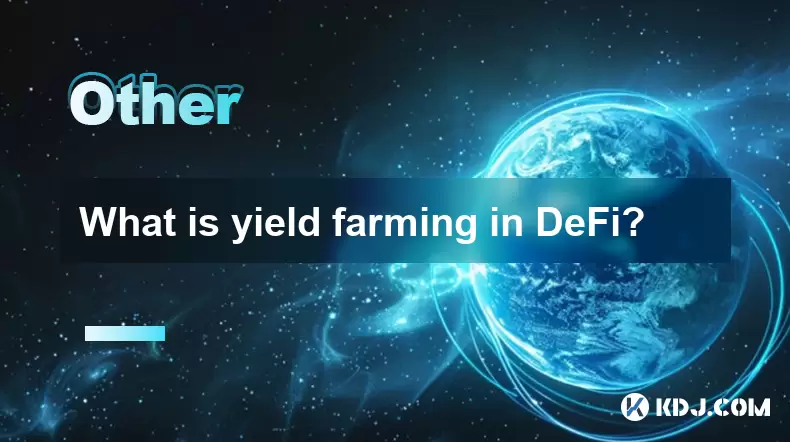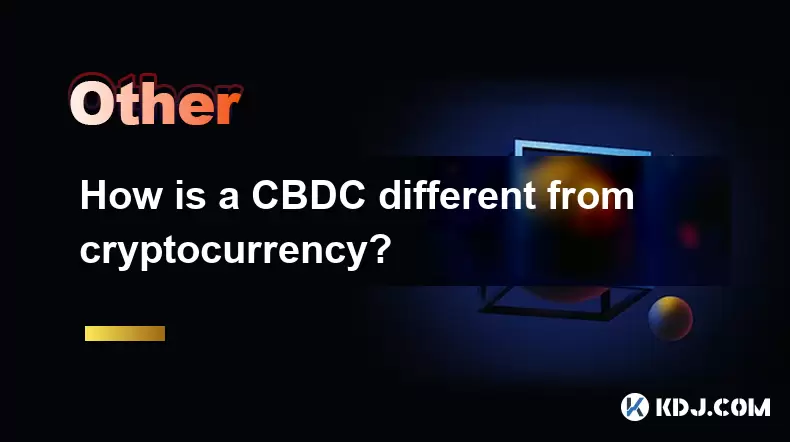-
 Bitcoin
Bitcoin $118300
-3.52% -
 Ethereum
Ethereum $4554
-3.81% -
 XRP
XRP $3.090
-5.78% -
 Tether USDt
Tether USDt $1.000
0.04% -
 BNB
BNB $842.0
-0.27% -
 Solana
Solana $194.6
-3.24% -
 USDC
USDC $0.9998
0.00% -
 TRON
TRON $0.3600
-0.20% -
 Dogecoin
Dogecoin $0.2243
-7.95% -
 Cardano
Cardano $0.9066
2.57% -
 Hyperliquid
Hyperliquid $45.89
-4.06% -
 Chainlink
Chainlink $22.49
-5.34% -
 Stellar
Stellar $0.4261
-6.01% -
 Sui
Sui $3.753
-5.87% -
 Bitcoin Cash
Bitcoin Cash $592.1
-3.33% -
 Ethena USDe
Ethena USDe $1.001
-0.01% -
 Hedera
Hedera $0.2502
-5.51% -
 Avalanche
Avalanche $23.71
-6.22% -
 Litecoin
Litecoin $121.8
-6.36% -
 Toncoin
Toncoin $3.416
-2.58% -
 UNUS SED LEO
UNUS SED LEO $9.323
0.85% -
 Shiba Inu
Shiba Inu $0.00001291
-6.93% -
 Uniswap
Uniswap $10.91
-9.13% -
 Polkadot
Polkadot $4.010
-5.38% -
 OKB
OKB $93.46
-9.08% -
 Dai
Dai $0.9999
0.00% -
 Bitget Token
Bitget Token $4.559
-4.99% -
 Cronos
Cronos $0.1545
-6.93% -
 Ethena
Ethena $0.7362
-5.51% -
 Aave
Aave $311.6
-4.32%
What is yield farming in DeFi?
Yield farming lets users earn rewards by providing liquidity to DeFi protocols, but it comes with risks like impermanent loss and smart contract vulnerabilities.
Aug 13, 2025 at 11:36 am

Understanding Yield Farming in the DeFi Ecosystem
Yield farming is a method used in the decentralized finance (DeFi) space to generate returns by providing liquidity to various protocols. Users lend or stake their cryptocurrency assets in smart contracts, which are then used to facilitate services such as lending, borrowing, or trading. In return, users earn rewards, typically in the form of tokens. This process leverages blockchain technology to eliminate intermediaries, allowing participants to earn interest or governance tokens directly from protocol activity.
The core mechanism behind yield farming involves liquidity pools, which are collections of funds locked in a smart contract. These pools power decentralized exchanges (DEXs) that use automated market maker (AMM) models, such as Uniswap or SushiSwap. When users contribute assets to a pool—such as pairing ETH with USDT—they become liquidity providers (LPs). In exchange, they receive LP tokens representing their share of the pool and start earning a portion of the transaction fees generated by trades within that pool.
Reward structures vary across platforms. Some protocols distribute native governance tokens as incentives to attract liquidity. For example, Compound introduced COMP tokens as rewards for users who supplied or borrowed assets on its platform. These tokens can often be traded or staked, creating additional earning opportunities. The annual percentage yield (APY) in yield farming can fluctuate significantly due to market demand, token emissions, and impermanent loss.
How to Start Yield Farming: A Step-by-Step Guide
Entering the world of yield farming requires a structured approach. Each step must be executed carefully to ensure security and optimal returns.
- Connect a non-custodial wallet such as MetaMask or WalletConnect to a DeFi platform. Ensure the wallet supports the blockchain network the protocol operates on—commonly Ethereum, Binance Smart Chain, or Polygon.
- Acquire the necessary tokens. Most liquidity pools require a pair of assets (e.g., ETH/USDC). Use a centralized exchange (CEX) or a DEX to purchase and transfer these tokens to your wallet.
- Navigate to a DeFi platform like Aave, Curve, or Balancer. Locate the “Pools” or “Farm” section where available opportunities are listed.
- Select a liquidity pool that matches your asset pair. Review the APY, total value locked (TVL), and token rewards before proceeding.
- Approve the token spending limit through a smart contract interaction. This step requires a small gas fee and grants the protocol permission to access your tokens.
- Deposit your tokens into the pool. Upon confirmation, you will receive LP tokens sent to your wallet.
- Stake the LP tokens in a designated yield farm to begin earning additional rewards, often in the form of the platform’s native token.
Always verify the contract address and website URL to avoid phishing scams. Utilize tools like Etherscan or DeFi Pulse to audit the legitimacy and performance of a protocol.
Risks Associated with Yield Farming
While yield farming can offer high returns, it is accompanied by several risks that users must evaluate.
Impermanent loss occurs when the price ratio of the two assets in a liquidity pool changes significantly after deposit. If one asset appreciates or depreciates relative to the other, LPs may end up with fewer assets than if they had simply held them. This loss is “impermanent” only as long as the assets remain in the pool; withdrawing during a price imbalance makes it permanent.
Smart contract vulnerabilities pose another major threat. Since yield farming relies on code, any bugs or exploits in the protocol can lead to fund loss. High-profile hacks, such as those on Poly Network or Harvest Finance, have resulted in millions of dollars stolen. Always check if a platform has undergone third-party audits from firms like CertiK or OpenZeppelin.
Rug pulls are a form of exit scam where developers abandon a project and drain the liquidity pool. New or anonymous teams with unaudited code are particularly susceptible. Evaluate the team’s transparency, community engagement, and token distribution before investing.
Market volatility also impacts yield farming. The value of reward tokens may drop sharply after farming begins, eroding profits. Additionally, high gas fees on networks like Ethereum can reduce net gains, especially for smaller investments.
Different Types of Yield Farming Strategies
Participants employ various strategies to maximize returns while managing risk.
Single-asset staking allows users to deposit one type of token into a protocol and earn rewards. For example, staking ETH on Lido generates stETH and earns staking rewards. This avoids impermanent loss but may offer lower yields.
Liquidity provision involves depositing two tokens into a pool. While this exposes users to impermanent loss, it often yields higher returns due to fee accumulation and dual-token incentives.
Leveraged farming uses borrowed assets to amplify positions. A user might deposit ETH as collateral, borrow stablecoins, and provide liquidity with both. This increases potential returns but also magnifies risk, including liquidation if collateral value drops.
Yield aggregation platforms like Yearn Finance automate the farming process. They shift funds between protocols to capture the highest available yields with minimal user input. These vaults handle complex strategies, including compounding and rebalancing.
Monitoring and Managing Your Yield Farming Positions
Active management is crucial for optimizing returns and minimizing exposure.
Use blockchain explorers like Etherscan to track transaction history and confirm deposits and withdrawals. Monitor your LP token balance and reward accruals regularly.
DeFi dashboards such as Zapper.fi or DeBank aggregate all your positions across multiple protocols. These tools display real-time APY, TVL, and asset distribution, enabling informed decisions.
Set up price alerts for your reward tokens using services like CoinGecko or CoinMarketCap. Sudden drops may prompt you to withdraw or sell rewards.
Reassess farming opportunities frequently. New pools often offer high “introductory” APYs that decline over time. Rotating funds to better-performing pools can enhance returns.
Frequently Asked Questions
What is the difference between staking and yield farming?
Staking typically involves locking up a single cryptocurrency to support a blockchain’s operations, such as validation in proof-of-stake networks. Yield farming is broader, often involving providing liquidity to DeFi protocols and earning multiple types of rewards, including fees and governance tokens.
Can I lose money in yield farming?
Yes. Risks include impermanent loss, smart contract exploits, token devaluation, and high gas fees. Even if rewards accrue, the underlying asset value may decrease, resulting in a net loss.
Are there tax implications for yield farming rewards?
In many jurisdictions, receiving yield farming rewards is considered taxable income at the time of receipt. The value is calculated in fiat currency based on the token’s market price. Subsequent sales or trades may trigger capital gains taxes.
How do I claim my farming rewards?
Navigate to the protocol’s interface, locate your staked LP tokens, and click the “Harvest” or “Claim” button. This triggers a transaction that sends accrued tokens to your wallet. A gas fee is required for this action.
Disclaimer:info@kdj.com
The information provided is not trading advice. kdj.com does not assume any responsibility for any investments made based on the information provided in this article. Cryptocurrencies are highly volatile and it is highly recommended that you invest with caution after thorough research!
If you believe that the content used on this website infringes your copyright, please contact us immediately (info@kdj.com) and we will delete it promptly.
- Kazakhstan's Crypto Leap: Bitcoin ETF and Central Asia's Digital Finance Future
- 2025-08-13 12:45:19
- BlockDAG Presale Blazes Past $371M: Fundraising Frenzy Fuels Crypto Sensation
- 2025-08-13 13:05:21
- Meme Coins: Chasing the 2025 Surge – Which Will Moonshot?
- 2025-08-13 10:25:23
- Bitcoin's Wild Ride: Rally, Pullback, and What's Next
- 2025-08-13 10:25:23
- Bitcoin, Bitmax, and Institutional Demand: A New Era of Crypto Investment
- 2025-08-13 10:45:12
- Solana, ROAM, and Airdrops: What's the Buzz in 2025?
- 2025-08-13 11:35:13
Related knowledge

How does blockchain enable Web3?
Aug 13,2025 at 11:35am
Understanding the Role of Blockchain in Web3 InfrastructureBlockchain serves as the foundational layer upon which Web3 is built, enabling a decentrali...

How is a CBDC different from cryptocurrency?
Aug 12,2025 at 09:21am
Understanding the Core Nature of CBDCsA Central Bank Digital Currency (CBDC) is a digital form of a country’s sovereign currency, issued and regulated...

What is a CBDC (Central Bank Digital Currency)?
Aug 13,2025 at 11:36am
Understanding the Concept of a Central Bank Digital CurrencyA CBDC (Central Bank Digital Currency) is a digital form of a country’s fiat currency that...

How can zero-knowledge proofs enhance privacy on a blockchain?
Aug 12,2025 at 02:15am
Understanding Zero-Knowledge Proofs in Blockchain ContextZero-knowledge proofs (ZKPs) are cryptographic protocols that allow one party (the prover) to...

How does blockchain governance work?
Aug 13,2025 at 11:35am
Understanding Blockchain GovernanceBlockchain governance refers to the mechanisms and processes through which decisions are made about the development...

What is on-chain vs. off-chain data?
Aug 13,2025 at 11:35am
Understanding On-Chain Data in CryptocurrencyOn-chain data refers to all information that is permanently recorded and stored directly on a blockchain....

How does blockchain enable Web3?
Aug 13,2025 at 11:35am
Understanding the Role of Blockchain in Web3 InfrastructureBlockchain serves as the foundational layer upon which Web3 is built, enabling a decentrali...

How is a CBDC different from cryptocurrency?
Aug 12,2025 at 09:21am
Understanding the Core Nature of CBDCsA Central Bank Digital Currency (CBDC) is a digital form of a country’s sovereign currency, issued and regulated...

What is a CBDC (Central Bank Digital Currency)?
Aug 13,2025 at 11:36am
Understanding the Concept of a Central Bank Digital CurrencyA CBDC (Central Bank Digital Currency) is a digital form of a country’s fiat currency that...

How can zero-knowledge proofs enhance privacy on a blockchain?
Aug 12,2025 at 02:15am
Understanding Zero-Knowledge Proofs in Blockchain ContextZero-knowledge proofs (ZKPs) are cryptographic protocols that allow one party (the prover) to...

How does blockchain governance work?
Aug 13,2025 at 11:35am
Understanding Blockchain GovernanceBlockchain governance refers to the mechanisms and processes through which decisions are made about the development...

What is on-chain vs. off-chain data?
Aug 13,2025 at 11:35am
Understanding On-Chain Data in CryptocurrencyOn-chain data refers to all information that is permanently recorded and stored directly on a blockchain....
See all articles

























































































